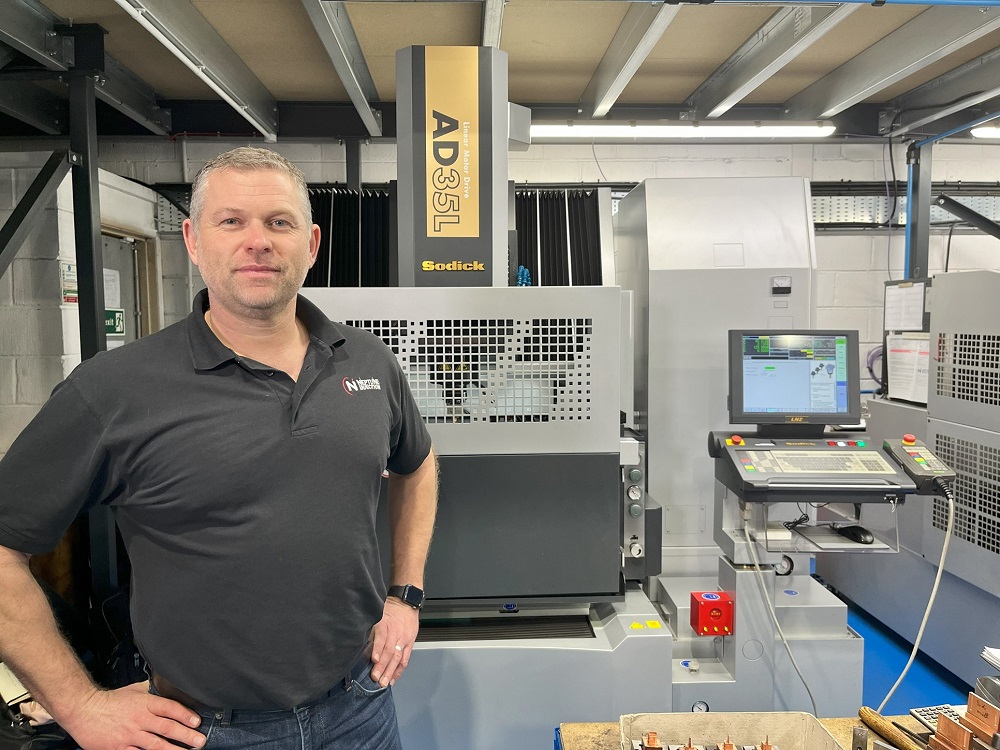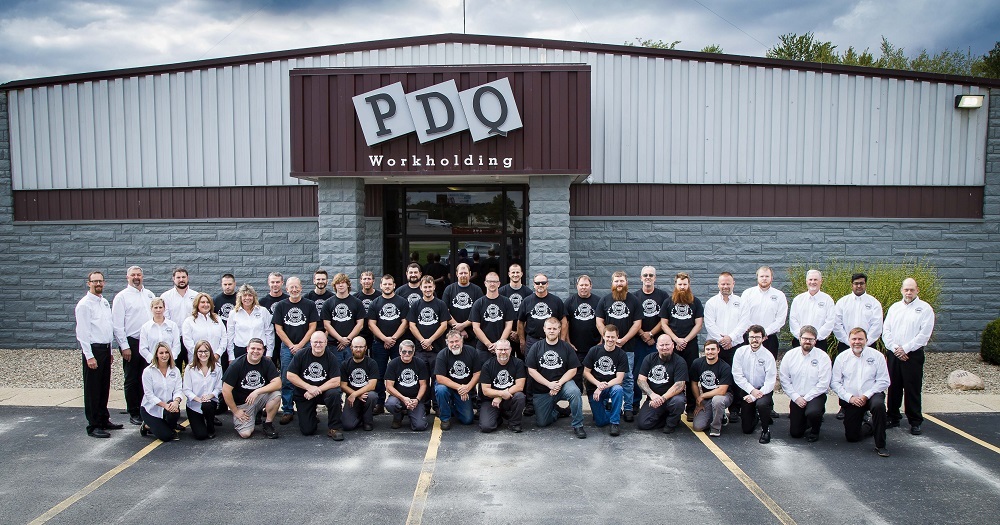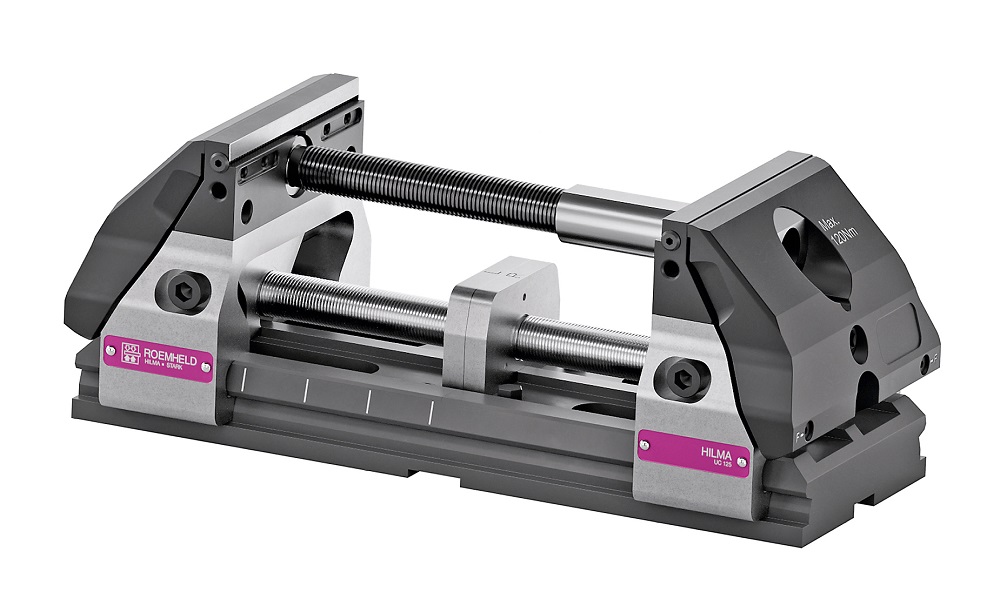Since its market introduction, Sodick says that its AD35L die-sink EDM with linear motor drive has been a revelation for the tool and mould-making industry, which is why Stevenage-based Neptune Injection has added two AD35L machines to its facility. As one of the UK’s leading injection moulding and mould tooling companies, Neptune Injection (part of Neptune Engineering) has grown exponentially with the support of Sodick Europe and its sole UK distributor Sodi-Tech EDM.
The first Sodick machine arrived at Neptune Injection 12 years ago.Today, the company has two AD35L die-sink EDMs, a compact Sodick VL400Q wire EDM, a VZ300L with linear motor drives and linear scales, and an AD30L die sink EDM. This rapid uptake of Sodick EDM technology was set in motion in 2010 when Gary Statham acquired the business that has now been in operation for over 40 years.
Reflecting back at the start of the relationship with Sodick, Statham says: “The relationship with Sodick goes back to when I was an apprentice and we used Sodick machines. I then worked for another mouldmaker in the early 2000s which also had Sodick spark-erosion machines. When I took over this business in 2010, the company had a different brand of die-sink technology. On the previous machines, the electrode wear was really high with very long machining times. We knew from test cuts with Sodick that we could reduce our lead times, cut the time to spark and reduce the wear on electrodes. This meant that we would need fewer electrodes to do each job and the result would be less electrode machining time.”
Neptune Injection nowhas more than 20 employees, ISO9001 accreditation and lights-out manufacturing capability at its Hertfordshire facility.
“When we started, there were just three of us,” says Statham.“I spoke to the sales engineer at Sodi-Tech as I wanted Sodick machines based on my experience at previous companies. Sodi-Tech looked at the size of our company and helped us formulate a package that came within our budget and time constraints. They also provided additional training for our staff, helping us hugely along the way. The Sodick machines and the service from Sodi-Tech EDM are great.”
The level of service for the Sodick EDM machines has seen the relationship flourish, as Sodi-Tech director of sales Greg Capp explains: “Over 12 years ago, Neptune approached us with the need for a machine for a specific job – we delivered that machine. Since then, their business has grown and Neptune Injection is not replacing machines but investing in new technology, which is growing their business even further. Neptune Injection works in a range of different business areas and is after the same thing in all of them – high accuracy, high surface finish and repeatability. With Sodick machines we can offer all those things.”
Underpinning this sentiment, Statham adds: “We are a high-precision toolmaking business and that’s why we use Sodick. They are high-precision machine tools that give us the accuracy we require.”
Spotlighting the long-standing relationship and its evolution, Capp says: “Going from a small business to where Neptune Injection is nowdemonstrates our great working relationship and that Gary trusts Sodick. This trust is built upon the knowledge that the customer can get the same quality parts every single time when they use Sodick machines. The die-sink and wire-erosion machines work hand-in-hand and the operating system is the same, so the operators using the machines can pick it up easily and interchange from one machine to another.”
Statham recalls the transformation of the manufacturing sector and how Sodick’s advanced technologies and innovations have enabled Neptune to be efficient, productive and competitive: “The lead times and prices on jobs can be so aggressive, so it’s very important to get it right. Around 15 to 20 years ago, we would be quoting 16-20 week leadtimes for a job, whereas now customers expect delivery in six, eight or 10 weeks. To achieve this we need to have a machine that is extremely efficient and can give us exceptional surface finishes and precision – and quickly. The Sodick machines have linear motors, so the positional accuracy of the electrode is ‘spot on’ and within 2µm. The surface finish goes down to zero VDI, which means we don’t have to hand polish afterwardsfor a lot of our work. This enables us to finish the entire job on the spark eroder, thus reducing our lead times, internal costs and external costs for polishing.”
Summarising how the Sodick EDM technology has enhanced manufacturing operations at Neptune, Statham adds: “The footprint of the machine is small in comparison to the work envelope, which is great as we don’t have the biggest facility. Furthermore, the manufacturing time is much faster than it is with other machine tool suppliers. What sets the Sodick machines apart from the competition is the repeatability; we can also achieve great surface finishes with a very fast cutting time. On machine tools from other brands, you need more electrodes to spark the jobs, which adds time and cost.
“On the wire machines, we often need to make additional cuts around the metalwork,” he continues.“So rather than doing a job in three cuts, we may need to do four or five cuts to get the finished part, which extends the production time on other machines. On the Sodick EDMs, we know that in three cuts we can achieve impeccable precision and surface finishes.”
For further information www.sodick.eu



















